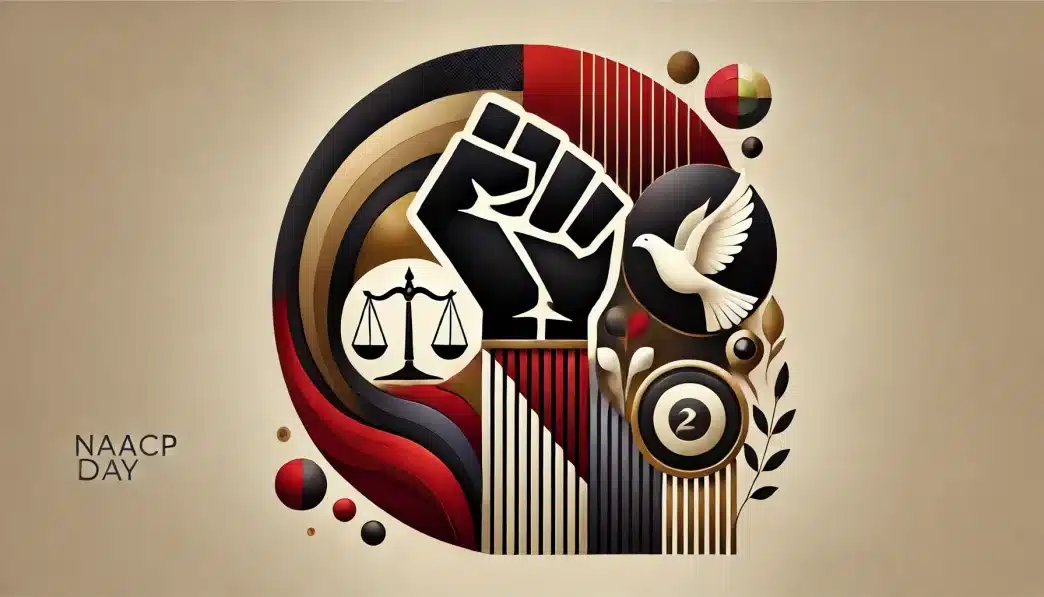What is NAACP Day?
NAACP Day, also known as NAACP Founders’ Day, is observed annually on February 12 to commemorate the founding of the National Association for the Advancement of Colored People (NAACP) in 1909. This day honors the organization’s dedication to fighting racial injustice and promoting civil rights in the United States.
The NAACP was established to address systemic discrimination, violence, and inequality faced by African Americans. Since its founding, the organization has played a pivotal role in legal victories, advocacy efforts, and public awareness campaigns aimed at securing equal rights for all people.
History and Origin
The NAACP was founded on February 12, 1909, coinciding with the 100th anniversary of President Abraham Lincoln’s birth. The organization emerged in response to lynchings, racial segregation, and voter suppression, which were widespread at the time. Among its founders were prominent activists and scholars, including W.E.B. Du Bois, Ida B. Wells-Barnett, Mary White Ovington, and Henry Moskowitz.
One of the NAACP’s earliest legal victories was in 1915, when it successfully challenged an Oklahoma law that disenfranchised Black voters. Over the decades, the organization has been involved in landmark civil rights cases, including Brown v. Board of Education (1954), which led to the desegregation of public schools. Today, the NAACP remains a powerful force in advocating for racial equality, voting rights, and social justice.
Who Observes NAACP Day?
- NAACP members and supporters who honor the organization’s legacy and ongoing efforts.
- Educational institutions that highlight the history of civil rights movements.
- Community organizations that promote social justice and equality.
- Individuals who advocate for civil rights and racial justice.
- Public officials who recognize the NAACP’s contributions to American society.
Slogans and Themes
NAACP Day focuses on civil rights, social justice, and equality. It serves as a reminder of the struggle against racial discrimination and the progress that has been made. Common slogans include “Advancing Justice,” “Equality for All,” and “Honoring a Legacy of Change.”
Colors, Symbols, and Patterns
Colors
- Black represents the African American community and its resilience.
- Gold symbolizes excellence and the pursuit of justice.
- White signifies unity and the collective effort toward equality.
Symbols
- Scales of Justice represent the fight for legal equality.
- Broken Chains signify freedom from oppression.
- Torch symbolizes enlightenment and the ongoing struggle for civil rights.
Patterns
- Interlocking Hands illustrate solidarity and community support.
- Marching Figures depict the collective action of civil rights movements.
- Doves represent peace and the aspiration for harmonious coexistence.
How to Observe NAACP Day
- Attend local events such as lectures, discussions, or panels on civil rights history.
- Support NAACP initiatives by donating or volunteering with local chapters.
- Educate yourself and others about the history of the NAACP and its impact.
- Participate in community service projects that promote social justice.
- Advocate for policies that advance racial equality and justice.
Most Used Hashtags
- #NAACPDay
- #FoundersDay
- #CivilRights
- #SocialJustice
- #EqualityForAll
Why is NAACP Day Important?
NAACP Day serves as a reminder of the organization’s role in advancing civil rights and fighting racial discrimination in the United States. It honors the legacy of activists who have worked tirelessly for equality while highlighting the ongoing need for advocacy and action to address systemic racism.
By observing NAACP Day, individuals and communities reaffirm their commitment to justice, representation, and equal rights. The holiday encourages reflection on the progress that has been made and inspires continued efforts toward a more just and inclusive society.
Features
- Peace and Human Rights
